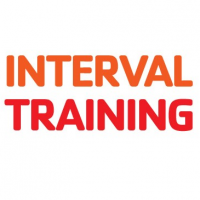Threshold training refers to exercise intensity designed to raise the lactate threshold (LT), a high, sustainable (though for how long varies greatly) intensity just below the point at which the appearance of lactate exceeds the body’s ability to clear it. Lactate threshold is highly responsive to training (unlike VO2 max), and raising it allows someone to sustain a higher power for longer, meaning a recreational athlete will be more comfortable on long climbs and other challenges they encounter on the road or trail.
In our previous chapter, we covered the exercise physiology of lactate threshold and VO2 max. In this post we teach you how to raise LT through intervals.
Even a student who never ventures outside will benefit from training to raise LT; working harder helps burn more calories during the class and this “afterburn” persists for several hours. Philosophically, as instructors, it’s our job to push our students out of their comfort zone. Not to shove them off a cliff, but to encourage them to explore their own athletic abilities and to discover the joys of pushing a little bit harder, or longer, or faster.
We are using an indoor bike as our training tool, so we’re going to follow the tenets of cycling for our training. There are exercise classes on treadmills and rowing ergometers that use drills and principles from the sports of running and rowing. There is no requirement that one be a runner or rower to participate, just as that’s not required in a cycling class. Effective training on a bike (whether indoors or out) is well established and exhaustively researched and none of it includes push-ups or hand weights while in the saddle.
In truth, our students’ goals are similar to those of an athlete: improved fitness, performance (however you define it), and better body composition. Those goals diverge with the amount of time devoted to the pursuit and the level of effort put into training.
Any competitive athlete deserving of that name, whether a high school standout or masters competitor, knows that getting better takes hard work and dedication. While many of our students seem to want what the athlete has achieved without the effort athletes put in (cue ads for diet supplements), many ARE willing to work hard with our guidance and reassurance.
 When your students trust you, they are more likely to step up to a challenge. Building rapport and generating confidence in your training knowledge will create an environment where you can encourage your participants to reach higher and work harder. This means that you must also help students figure out when it’s appropriate to push against their boundaries (when they are well rested and nourished, have been sleeping well, and they feel good) and when it’s not (when they are overwhelmed by life stress, brand new to exercise, or coming down with something), to name only a few examples.
When your students trust you, they are more likely to step up to a challenge. Building rapport and generating confidence in your training knowledge will create an environment where you can encourage your participants to reach higher and work harder. This means that you must also help students figure out when it’s appropriate to push against their boundaries (when they are well rested and nourished, have been sleeping well, and they feel good) and when it’s not (when they are overwhelmed by life stress, brand new to exercise, or coming down with something), to name only a few examples.
Adaptations, the physiological responses to training, come about by manipulation. Not the scheming kind, but the deliberate, do x to get y kind. To increase fitness, you can’t work at the same intensity you always have and expect something to change. In exercise physiology it’s called “overload.” It applies in everything from sprinting to endurance to weight training.
An excellent way to get the adaptations the majority of our riders want, including fitness and wellness benefits, is to encourage them to improve their LT. That includes longer intervals at threshold intensity. We explain how below.
Intensity and Duration of Threshold Training
 To train the lactate threshold, intensity must be right at or slightly below LT or VT (ventilatory threshold). It has to feel “hard.” So this is not where you’re taking new students in their first few weeks or months. When it is time for them to try it, introduce the intensity gradually and methodically.
To train the lactate threshold, intensity must be right at or slightly below LT or VT (ventilatory threshold). It has to feel “hard.” So this is not where you’re taking new students in their first few weeks or months. When it is time for them to try it, introduce the intensity gradually and methodically.
The stimulus for LT adaptations is sustaining that effort for at least 5 minutes and aiming to increase the time at threshold to 10 or 15 minutes. Again, this is a hard effort, but not the kind that makes you see stars or induces nausea. The good news is that you can do several intervals at LT, interspersed with rest, and you still get “credit” for the total time spent working. The recovery should be 3 to 5 minutes, depending on the length of the work interval. As an introduction to threshold training, try sets like 3 x 5 minutes or 2 x 6 minutes and build from there.
ICA has provided members with a template for creating dozens of different threshold training intervals. Notice that they progress from multiple shorter intervals to fewer longer ones. Let these serve as your guide to creating your threshold interval workouts.
ICA also has a series on cueing for high-intensity efforts. In this article on how to cue longer efforts at lactate threshold, you’ll find 25 cues to inspire your riders to stay committed to the hard effort and what physical sensations they should be feeling. It also gives you ideas for creating your own effective cues.
How About You, the Instructor?

